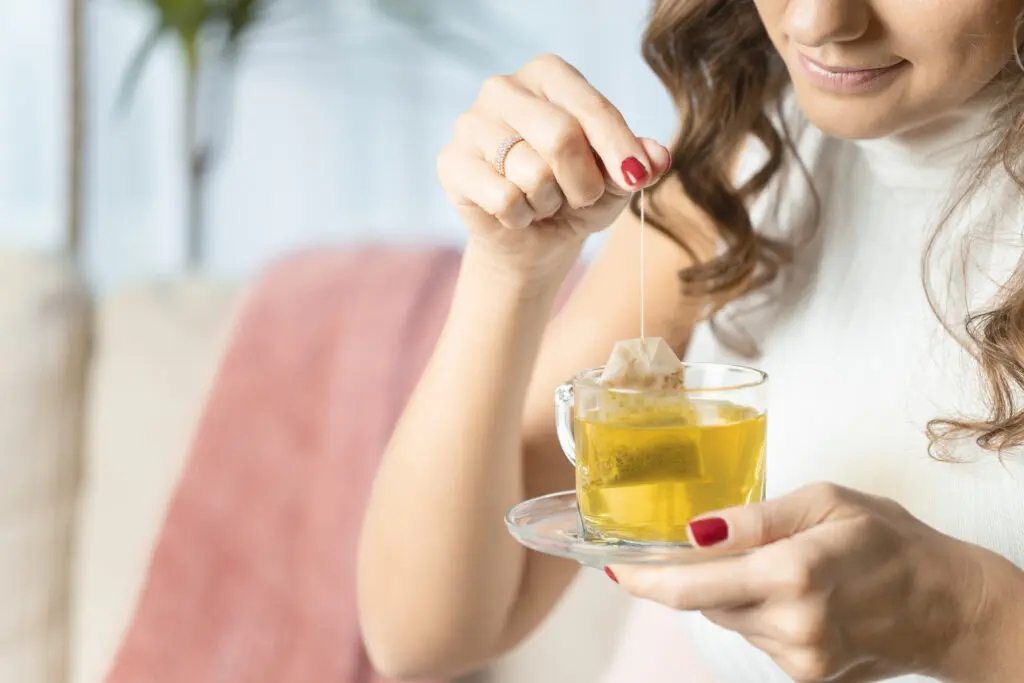When inflammation rears its ugly head on your joints it is not only painful but can leave movement restricted. While inflammation is the body’s natural reaction to injury and infection, continuous inflammation in one joint in the body or several, may be an indicator of arthritis. You’re not alone, according to the NHS, millions of people in the UK suffer from arthritis which can start in your early 40s, so what can you do to combat pain from inflammation.
1. Cut out caffeine

Although the morning might be better with a cup of coffee consuming multiple cups throughout the day may increase inflammation. It seems that our caffeine fix might not be fixing our joints. It’s not just coffee that’s the problem but caffeine is in tea, chocolate, and some energy drinks.
Instead try drinking green tea with its high antioxidant profile and high presence of polyphenols. This helps the gut barrier to strengthen and encourages the healthy gut microbes to grow. If green tea isn’t your thing try making some smoothies from either fruit or vegetables and try to include turmeric which is a great anti-inflammatory agent.
2. Get moving

Regular exercise can decrease inflammation due to the muscle cells releasing a small protein called IL-6, which fights inflammation. Not only that but according to recent research, exercise can reduce the risk of diabetes and heart disease partially by the anti-inflammatory effects of exercise.
You don’t need to be at the gym for hours, research suggests that just a 20-minute session of moderate exercise can have an anti-inflammatory effect. Swimming is a great way to exercise especially if you are in pain, the buoyancy of the water supports joints as well as the act of swimming stimulates blood circulation which can help muscle stiffness. According to Swim England, 14 million adults went swimming in the last 12 months, so you won’t be alone!
3. Lose some pounds

It seems that being overweight, and inflammation go hand-in-hand. Extra body weight increases the pressure on joints such as the knees causing the body to feel stressed, although, it is also true to say that inflammation also causes people to be overweight. This is because low-grade inflammation causes the body to swell meaning that you will weigh more.
Eating foods which contain antioxidants and omega-3 fatty acids will help. Good sources of these are tomatoes, nuts, seeds, fatty fish like salmon and leafy greens such as spinach and kale. Try to avoid fried foods, red meat and processed meat, like sausages, margarine and refined carbohydrates like white bread and pastries. Don’t forget to increase fibre in your diet which helps to feed healthy gut bacteria and lower levels of inflammation as well as aiding weight loss. Fibre fills you up and helps you to avoid blood sugar crashes. Aiming for a Mediterranean diet which is high in fruit, vegetables, nuts and healthy oils will not only lower inflammation but will improve mood and therefore quality of life.
4. Give yourself a massage

According to research massage can boost circulation, alleviate muscle tension and promote relaxation. Let your hands smoothly massage the area where you have pain using Taylor’s CBD Award Winning Body Oil. CBD is a natural anti-inflammatory from the hemp plant when massaged into the skin it binds with the CBD receptors located all over the body which are associated with pain sensation, immune function, mood and more. Of course, if you don’t want to do your own massage give the Body Oil to a massage therapist. Let the therapist know where the inflammation is so they will know where to apply pressure or work a different technique
5. Deep breathing

Studies show that there is a link between emotional and psychological stress and inflammation. When you experience stress, your body sends resources to areas that it thinks you need like providing the immune system with energy to fight infection and therefore the body produces inflammation. One solution is breathing exercises, they have been shown to reduce anxiety and stress by slowing down the heart rate, lowering blood pressure and increase oxygen. Try the 4-7-8 method. This focuses on long measured exhales. A deep exhale is the part of the exercise that promotes the deepest relaxation. Sit upright, fully exhale, then breathe in through your nose for the count of four, hold it for seven and then exhale through your mouth for a count of eight. Repeat this sequence a three to four times. Doing breathing exercises regularly will help bring down stress levels.



